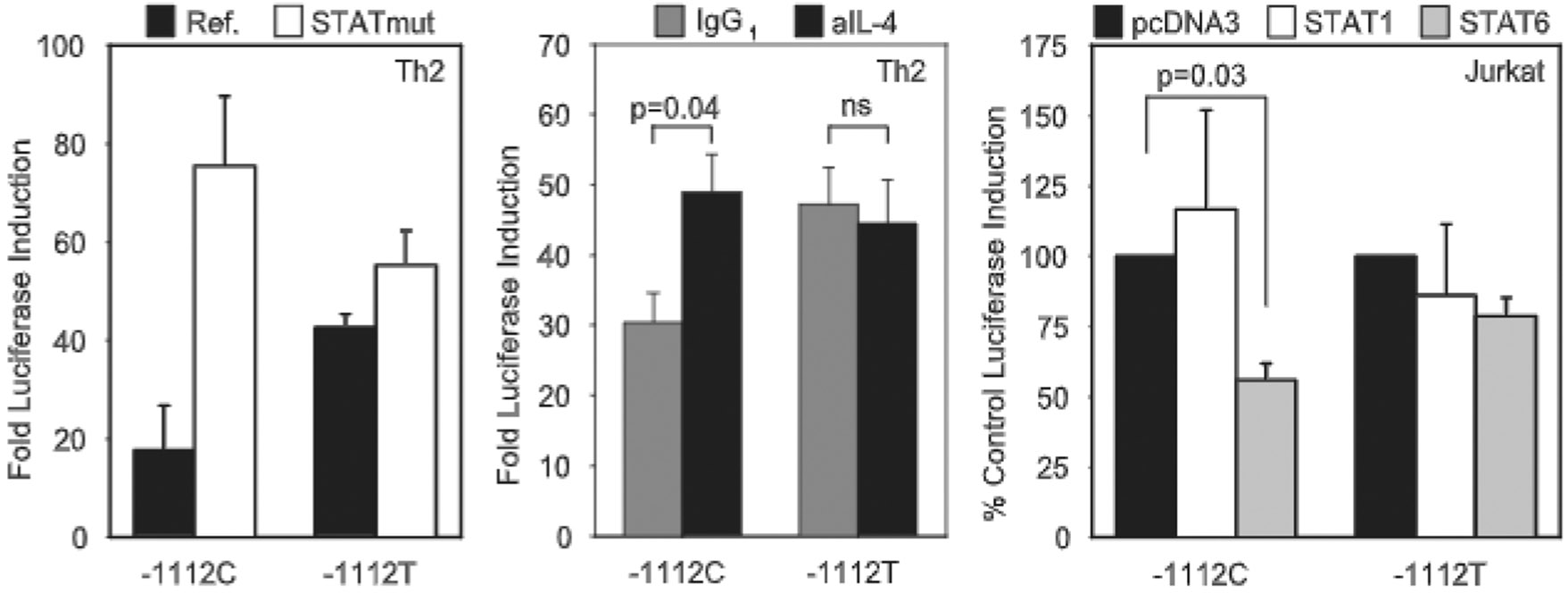FIGURE 4.

IL13-1112T altcnuatcs STAT6-mediated repression of IL-13 transcriplion. Left, Primary polarized human Th2 cells were transienlly transfected with −1112 allelic variants of the reference 2.7-kh IL13 promoter reporter construct (−1112C/Luc or −1112T/Luc) or equivalent constructs in which the STAT site adjacent to the SNP had been disrupted (−1112C STATmut/Luc and −1112T STATmut/Luc) (n = 2). Cells were left in medium or stimulated with PMA (20 ng/ml) and ionomycin (1 μM) and harvested after 16–18 h. Results are expressed as fold increase in RLA (mean ± SE) after stimulation. Center, Murine D10.G4.1 cells were harvested 6–12 days after antigenic stimulation and nucleofected with pGL3 Basic or IL13-1112C or T promoter reporter variants. Cells were incubated with neutralizing anti (a)-murine IL-4 or control IgG1 Ab for 16 h before harvesting (n = 6). Results are expressed as fold increase in the activity of the IL13 reporter constructs relative to pGL3 Basic. Right, Jurkat T cells were cotransfected with the −1112/Luc IL13 promoter constructs and pcDNA3, STAT1 (n = 4), or a STAT6 (n = 11) expression vectors. Cells were incubated with medium or PMA (20 ng/ml) and ionomycin (1 μM). IL-4 (10 ng/ml) was added to the STAT6 cotransfections. Cells were harvested after 16–18 h. Results arc expressed as percentage of fold luciferase induction in response to stimulation for STAT-transfected cells relative to cells transfected with pcDNA3 (mean ± SE). For all panels, statistical significance was determined using the Wilcoxon two-sample test.
